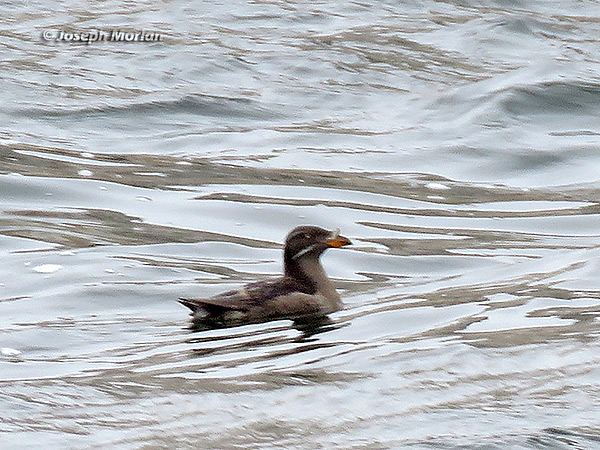
Named for the peculiar vertical horn at the base of its bill, this unique alcid is in its own monotypic genus. This is a burrow nesting species and the largest alcid to visit its nest only during the night. Unlike other nocturnal alcids, this species carries food externally, with multiple prey items held in its bill. Smaller alcids carry food internally in their crop. This species disappeared from the Farallons in the late 19th century but returned to breed there in the early 1970s. Its range continues to expand southward. There are now 28 colonies in California as far south as San Miguel Island. Canon PowerShot SX60 HS.
References:
Gaston, A. J. and S. B. Dechesne (1996). Rhinoceros Auklet (Cerorhinca monocerata), version 2.0. In The Birds of North America (A. F. Poole and F. B. Gill, Editors). Cornell Lab of Ornithology, Ithaca, NY, USA. https://doi.org/10.2173/bna.212
Nettleship, D.N., Garcia, E.F.J. & Boesman, P. (2019). Rhinoceros Auklet (Cerorhinca monocerata). In: del Hoyo, J., Elliott, A., Sargatal, J., Christie, D.A. & de Juana, E. (eds.). Handbook of the Birds of the World Alive. Lynx Edicions, Barcelona. (retrieved from https://www.hbw.com/node/54077 on 15 August 2019).